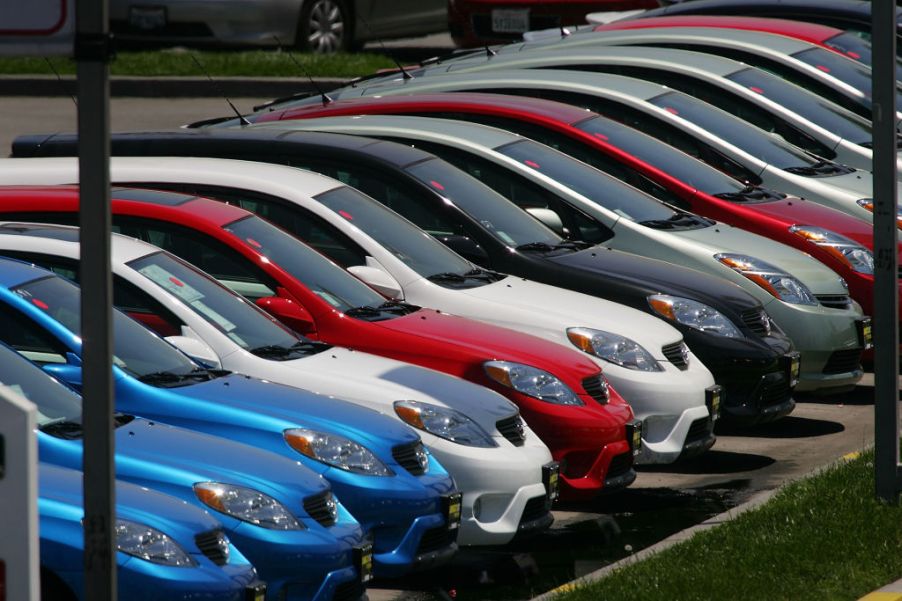
US Car Prices Are On The Rise But That May Change Soon
If you’re looking for a new car, you might be asking why new cars are so expensive.
According to Experian, one of the major credit reporting agencies, an average new car loan reached $30,977 in the third quarter of 2018. In December of that year, Kelley Blue Book reports that the average transaction price for a new car hit $37,577. But when you take extra equipment and inflation into account, the price of new cars actually hasn’t gone up as much as people may think. Although the sticker shock is still very real as new vehicle prices head towards $40,000.
There are several contributing factors for the high prices. Consumer demand for more features has automakers asking for more money. It costs more to cover today’s regulations for fuel economy, safety, and emissions. Lenders have more money to lend to borrowers. It’s easy to see why prices have been climbing.
But there may be hope.
While new cars are still going to be major investments, here are a few reasons why high prices are likely to level off or possibly decrease soon.
The SUV craze
One of the major reasons prices have risen in the auto industry is the steady popularity of SUVs. Until recently, all an automaker had to do was develop an SUV and present it. The sales were there.
But now SUVs flood the market and competition is intense. In the second quarter of 2019, 71% of auto sales were crossovers, SUVs, and pickup trucks. As a result, automakers with rising inventories are beginning to offer discounts in the hopes of making their SUV offerings stand out from the crowd.
The incentives offered for SUVs are substantial. For August, you can get this year’s Buick Encore and Ford Edge for 20% off MSRP and the GMC Terrain for 16% off MSRP. Other automakers are currently offering strong financing deals on models like the Hyundai Santa Fe, Kia Sorento, Jeep Cherokee, Jeep Grand Cherokee, and Toyota Highlander, which you can get for 0% financing for 60 or more months.
Some are offering discounts that read “$6,000 total savings.” These offers are usually combinations of cashback and bonus cash offers. Some discounts are only offered for given trim levels so it pays to read the fine print.
Discounts are emerging
Speaking of discounts, they are showing up in other segments too. In the first half of 2019, the cost of a new vehicle reached $39,500 which is enough to make many people stop and reassess their needs. It doesn’t mean that’s what you’ll definitely end up paying if you buy a new car though. According to Edmunds, after applied discounts, buyers in the U.S. paid an average of $37,030 for a new vehicle.
That’s right. In July alone, automakers offered over 2,900 deal packages. According to Cox Automotive, that’s a jump of 9.7% from June and 27% from 2018. Many of the deals offered are very specific even down to certain trim levels.
In July, GM raised incentives by $740 per vehicle. Ford boosted its incentives as much as $330.
For patient shoppers, it might be the perfect time to find a good deal on the vehicle they’ve been considering.
Making room for 2020 models
By all accounts, sales are slowing down and inventories are bigger than usual. It’s typically the time of year where car companies try to sell down the current models to make room for the next year’s vehicles to arrive. While some companies are cutting production, others are offering incentives and discounts.
According to Edmunds, July saw most dealers with lots filled with 2019 models. They estimate the inventories were 90% 2019 models which is the highest percentage in a decade. They maintain that only 7% of vehicles available for sale in July were 2020 models. That was the lowest level in the last decade.
Under the circumstances, it will be interesting to see how desperate automakers will become to hand off last year’s inventory. Again, smart, attentive shoppers could find some amazing deals in such a climate.
Sales are slow
Deutsche Bank analyst Emmanuel Rosner told USA Today that he recently projected that new vehicle sales in the U.S. will reach $16.7 million in 2019. While that seems like a healthy number, it’s a drop of about $500,000 from the previous year.
The predicted drop in sales shouldn’t be a surprise. When you consider the UAW contract negotiations expire in mid-September, the tariff talks, trade wars, and the on-going discussion over fuel-economy standards, the picture becomes a little clearer.
The attention of carmakers is also divided between traditional sales and the prospect of fleet customers like rental-car businesses. Many industry experts express concern about the automotive industry’s growing reliance on fleet sales and the overall impact it could have.
What’s the deal with used cars?
With prices on new vehicles being higher, many buyers might opt to seek a quality used car instead. But shoppers are noticing these days that they can’t go into a dealership and bargain for a much better deal as they could in the past. Why?
With online shopping, consumers are able to go on Google and find the car they’re looking for easily. They will pinpoint the best deal closest to them. And they expect to go to the dealership and bargain for an even better price. More often than not, that’s not happening.
Under the circumstances, many dealerships are already advertising the lowest price they can on used vehicles. If they put too much of a markup on the vehicle, they could miss out on potential buyers combing the internet. That also means that they sometimes aren’t able to negotiate with shoppers at a lower price because the car is already set at the lowest price they can accept.


